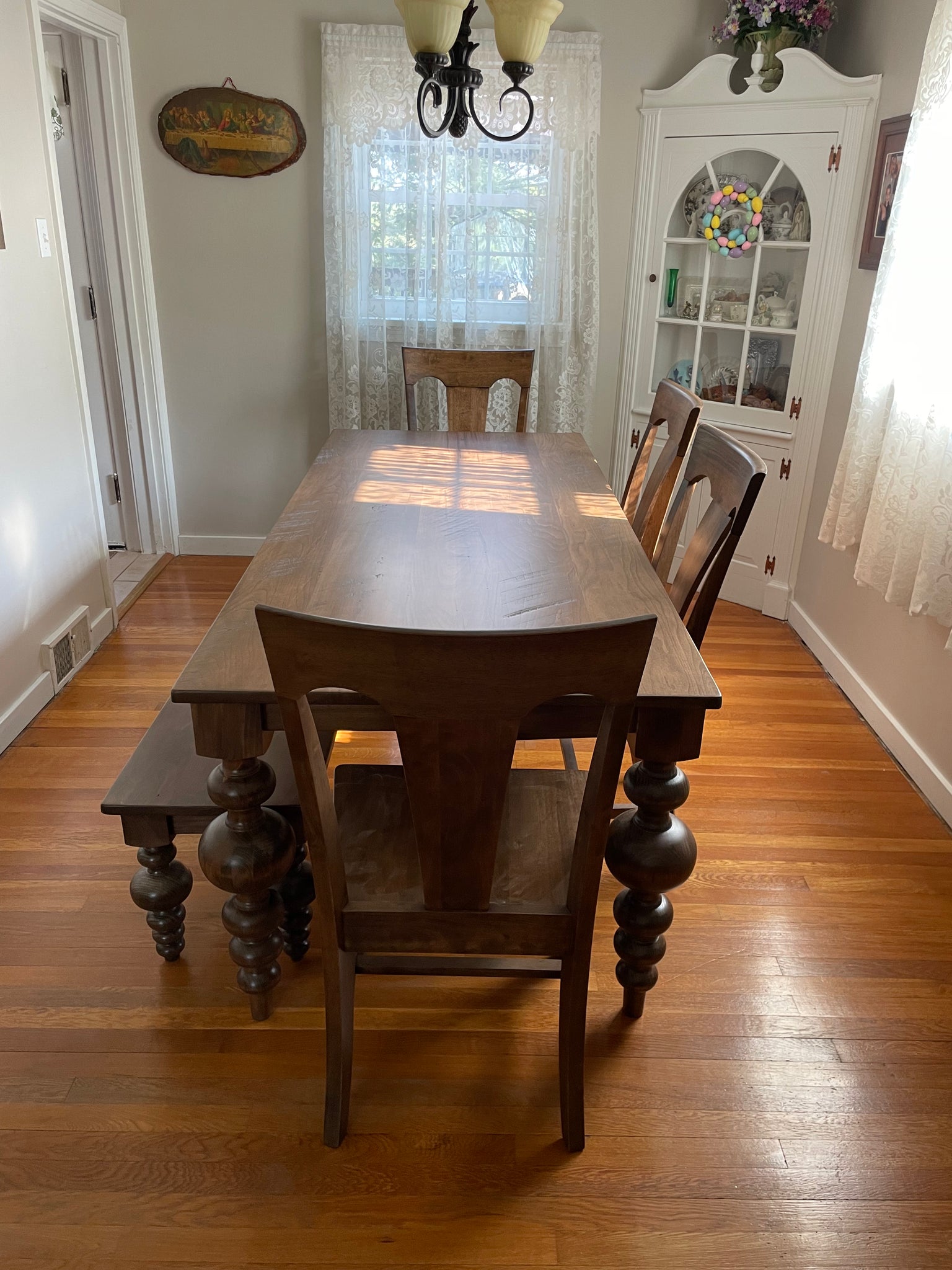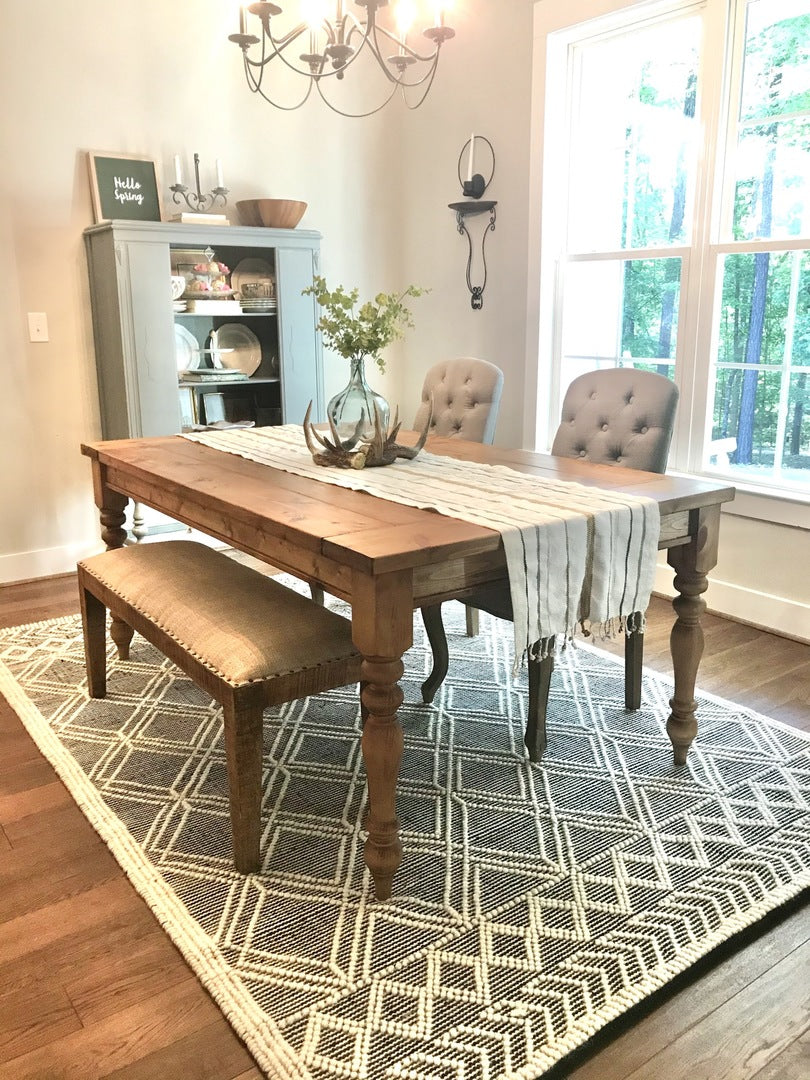A Comprehensive Check Out Dining Table Leg Styles: Locating the Ideal Suit
Choosing the ideal table leg design is essential for both aesthetic charm and useful capability. Standard 4 legs provide timeless style and security, while the pedestal base offers boosted legroom and a modern appearance. For those with bigger tables, trestle legs make sure durable support, whereas barrette legs present a mid-century contemporary ambiance with their minimal style. The x-shaped legs blend contemporary design with boosted security. Each of these options brings special benefits, making the option more than just an issue of choice. Explore even more to discover which style perfectly enhances your dining room and way of living.
Traditional Four Legs
Among the various types of eating table leg styles, the typical four-leg design stays an ageless choice for many homes. 4 legs supply well balanced support, ensuring the table remains steady and capable of bearing considerable weight (dining room table legs).
From a visual point of view, the conventional four-leg style can be quickly adapted to different interior styles. Whether crafted from timber, steel, or a combination of materials, these legs can be intricately sculpted, sleek and minimalistic, or anything in between. Their flexibility enables them to enhance both rustic and modern setups flawlessly.
Additionally, the straightforward structure of the four-leg design helps with simplicity of movement and positioning within a room. Unlike even more complicated bases, this style decreases blockages, supplying adequate legroom for restaurants. In summary, the conventional four-leg eating table leg style weds sustaining elegance with useful capability, making it an astute selection for those looking for both form and feature in their dining furniture.
Pedestal Base
Often commemorated for its classy and space-efficient layout, the pedestal base is a notable option to the traditional four-leg setup in table leg styles. This unique base commonly includes a solitary central column sustaining the tabletop, which can differ in kind, from ornately sculpted timber to smooth, modern metal. Among the main benefits of the pedestal base is its capability to make best use of legroom and seating versatility. Without edge legs, diners are managed greater liberty of movement, making it a perfect choice for round and oval tables that advertise more intimate and comprehensive celebrations.
The main column itself supplies a canvas for intricate layouts and creative expressions, including a component of visual rate of interest under the table. In summary, the pedestal base integrates performance with style, making it a refined and practical alternative for varied dining environments.
Trestle Legs
Trestle legs supply a durable and classic foundation for dining tables, characterized by their straight cross-bracing and tough support beam of lights. Originating from medieval times, this style has progressed yet maintained its vital structure, making it a seasonal favorite in both standard and modern setups. index The central trestle beam, typically sustained by 2 or even more upright blog posts, offers remarkable security, enabling bigger table lengths without the need for additional legs.
A significant advantage of trestle leg tables is the sufficient legroom they provide. Unlike tables with 4 corner legs, the lack of obstructions at the table's sides gives unimpeded room for chairs and restaurants, boosting convenience and access. This makes trestle tables optimal for accommodating larger celebrations, whether in a dining-room or a banquet hall.
The visual flexibility of trestle legs is notable. Readily available in a variety of materials such as timber, steel, and composite, they can be completed to match a variety of indoor styles. From rustic farmhouse to smooth contemporary designs, trestle legs can be customized to suit private tastes. Their long-lasting appeal and functional benefits make trestle legs an engaging option for those seeking both design and functionality in their table.
Hairpin Legs

The allure of hairpin legs exists in their simpleness and versatility - dining room table legs. Available in a variety of products, consisting of steel and brass, they can be completed in numerous colors to match different interior designs. Whether matched with a rustic wooden tabletop or a contemporary glass surface area, hairpin legs effortlessly mix functionality with a touch of classic charm
Longevity is an additional notable attribute of hairpin legs. In spite of their fragile look, these legs are engineered to birth substantial weight, guaranteeing the table continues to be steady and protected. Additionally, they are relatively easy to set up, making them a preferred choice for DIY lovers and expert furnishings manufacturers alike.
X-Shaped Legs

Constructed from materials such as steel, wood, or a mix of both, X-shaped legs can be tailored to match various design preferences. Steel legs usually lend a smooth and industrial feel, suitable for loft-style apartment or condos and contemporary eating areas. On the other hand, wooden X-shaped legs supply a warmer, extra rustic allure, suitable for farmhouse or eclectic insides. The versatility in materials enables house owners to personalize their table to much better fit their total layout scheme.
Furthermore, the engineering behind X-shaped legs makes sure also weight distribution, reducing the threat of wobbling and improving longevity. This makes them especially well-suited for larger eating tables that call for extra support. Fundamentally, X-shaped legs blend sensible design with modern-day appearances, making them a classic selection for diverse dining settings.
Final Thought
A detailed understanding of eating table leg designs discloses the distinct characteristics and benefits of each design. Standard 4 legs offer security and timeless charm, while stand bases provide legroom and a streamlined look. Trestle legs guarantee durable support for larger tables, and hairpin legs present a mid-century modern aesthetic. X-shaped legs combine contemporary layout with boosted stability. Selecting the suitable leg design makes certain both useful and aesthetic complete satisfaction in any type of dining space.